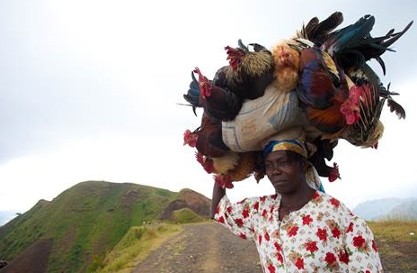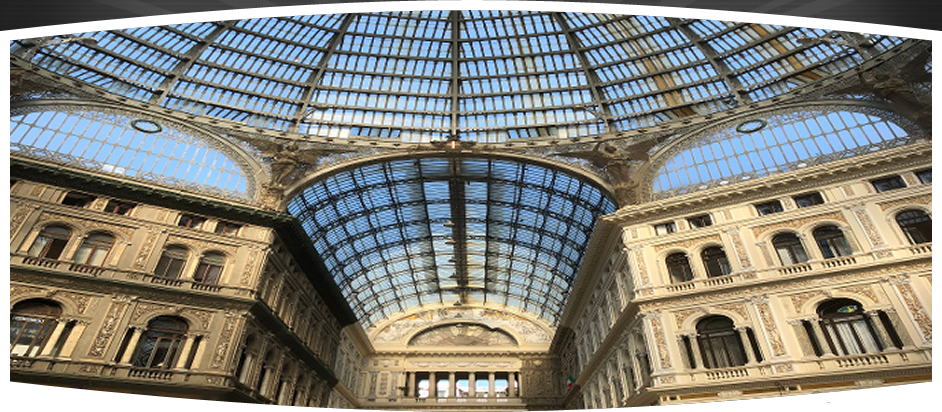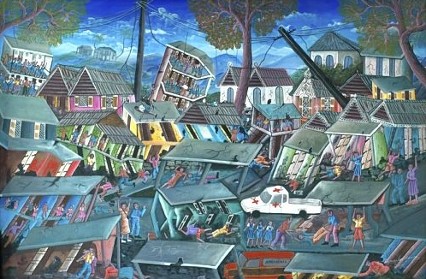|
Prologue: The immigration stamp on my passport read “République d’Haiti, Dr. Francois Duvalier, Président de la Vie” (Francois Duvalier, eternal leader for the republic of Haiti). Unofficially though, he was the dictator known as “Papa Doc”. I remember being struck by this statement quite often during a five day trip to this poor Caribbean island nation back in 1979. As the guest of Eastern Airlines (now defunct) and l’Office National du Tourisme d’Haiti, I was participating in a familiarization-orientation tour of Haiti along with twenty other travel agents. We were swiftly immersed in Haitian culture for the first time, and educated on the benefits of promoting Haiti as a tourist destination. Here are some recollections of that trip.
Note: At the bottom of this op-ed are links where you can donate to various forms of the Haitian earthquake disaster relief.
(Written as a supplement to the newsletter FOOTPRINTS: Travel News & Conversations with Craig.)
First Published, January 18, 2010.
|
The hotel is primarily patronized by jetsetters like Jacqueline Kennedy Onassis or Mick Jagger, for example. It boasts twelve swimming pools and is surrounded by lush landscaping. L’Habitation is one of those places that offers a sharp contrast to the troubling, extreme poverty that is evident everywhere you look in Haiti. In fact one is constantly reminded of the disparity between the Haitian quality of life and the utter beauty of the island’s landscape-lush green valleys, and mountains that are often ringed by clouds with an occasional shaft of sunlight burning through, shored by coral blue Caribbean waters. I realized that this beautiful, politically oppressed place was exotic, magical, and devastatingly surreal. And this of course, is it what makes Haiti such a compelling destination.
In addition to touring, there is also some free time, though we’re discouraged from venturing off alone. I’m only 22 years old, so naturally I’m not deterred by this warning. One afternoon, the bus driver lets us off in downtown Port-au-Prince with a strict reminder to return in one-hour, or we would have to fetch our own transportation back, in a camionette publique (an open truck) at the modest fare of five centimes. Two or three of us veer off on our own in search of shopping. As we’re making our way down the sidewalk I notice that crowds of people are again clamoring around us in the usual manner. They began to tug at our clothes and beg to offer us any type of special service for a fee. We know to repel them and keep walking for our own safety. But the sun is beating down very
|
|
Furiously scanning the news coverage of Haiti’s earthquake last week in the New York Times, Le Monde, and l’Orient le Jour (the French language dailies from both Paris and Beirut that I read for a decidedly different take on world news) I became emotional as I followed the accounts of devastation from the earth quake that struck Haiti, and felt compelled to pay tribute and to share what was for me one of the most memorable travel experiences of my career.
I’m often queried on favorite places, and have always cited Haiti as being right at the top of my list. The reaction is usually mixed. So here are some recollections from that experience in Haiti over 30 years ago. The adventure begins the moment we arrive on an Eastern Airlines 727 Whisper Jet at l'Aéroport International Francois Duvalier* in Port-au-Prince, Haiti (pron. “i-ee-tee”.) At the airport it’s a mob scene as crowds of Haitians converge on arriving passengers, begging to porter bags, to offer guide and translation services, etc. (Haitians speak French, and Créole which is a dialect of French that is difficult to understand.) They follow us out of the terminal, tugging at our sleeves and pant legs as we walk to the old school bus that will take us to the hotel. We’re whisked on-board the old bus which is hot and stuffy. The crowds are now clamoring around the bus, pressing up against, and hitting the windows with their hands, endlessly vying for attention from the newly arrived foreigners inside. With fits and starts the bus carefully pushes away from the crowd until finally it can gain enough speed to stay in motion.
It’s a pleasure to find that our hotel, the Villa Creole in Pétionville (pron. "pace-yown-veel,") a mountain suburb just above Port-au-Prince, is air-conditioned. Since it is early October and the temperature is still in the sizzling nineties, there’s extreme humidity. Haiti was, and still is devoid of the same high-rise hotels that inhabit neighboring Caribbean islands, but this adds to the flavor of the place. The Villa Creole is charming, with themed guestrooms, and a nice swimming pool.
Note: after last week’s earthquake, the hotel sustained damage, but is still intact, and there were no fatalities.

Carrying a colorful load to market at the Marché Communal de Kenscoff.
For the next few days we are guided, wined and dined by hoteliers, tour operators, and the Haitian Tourist Office. A scenic mountain tour to Kenscoff and Boutilliers puts us right smack dab in the middle of the afternoon locals flea-market. The bright colored clothing of the shoppers who are haggling and jostling about are strikingly vivid-elderly women balancing the day’s purchases high above their heads, and smoking long pipes. The bus driver stops for a photo op. We ask (as we have previously been advised) if we may photograph them, and they smile. Many have no teeth, but their wrinkled faces are nevertheless beautiful and full of character. Soon the bus is surrounded by swarms of people waving and tapping the windows for our attention, and we again creep along to be on our way.
Late one afternoon, we are again taken up into the mountains where we will visit and dine at l’Habitation Leclerc (la-be-toss-e-own, loo-clair,) a luxury resort hotel which was once an opulent palace and home to Pauline Bonaparte (Napoleon’s sister) during French colonial rule in the eighteenth century.
|
hot and the dust and car fumes from the street make it very uncomfortable. I’m sweating profusely, and I begin to feel faint, as if I may lose consciousness from the heat and the constant barrage of people pestering us. Suddenly we duck into a shop-any shop. We slam the door leaving the scene outside behind us. The air conditioning helps restore the senses, and it’s such a relief. “Bonjour monsieur, peux-je vous aider (hello sir, can I help you?)” the shopkeeper asks. Once I've regained my composure I begin to look around and realize that we’ve stumbled upon an art gallery called l’Atelier (I still have their card after all these years!) Though I’m young and know nothing about art, it’s at this moment that I find myself mesmerized by the myriad of large and small tableaux of primitive and surrealistic Haitian paintings all around us. My French is pretty good (and I can understand his) so I explain that we are just “shopping”. For the rest of the journey I am captivated by this art form (colorful, busy, distorted scenes of Haitian life) and am on a mission to purchase a painting. That evening we are hosted for dinner by the Hotel Montana in Pétionville which offers a stunning view of Port au Prince down below, at night. We are served an after-dinner drink (or digestif in French) that I have never before had, called Sambuca!
Note: the Hotel Montana was completely destroyed by the earthquake.
There was, during our entire stay, an unspoken, unacknowledged truth about political oppression on this exotic island. Prior to arriving there, I was acutely aware that Haiti was gripped by a corrupt, tyrannical dictator, Jean-Claude Duvalier, known as “Bébé Doc”, the son of “Papa Doc” the legendary Haitian dictator Francois Duvalier, who had died in 1971, leaving his son to continue the legacy. Our hosts in Haiti were purveyors of tourism so naturally the subject of the dictatorship was never broached. And looking back I realize that even if they wanted to level with us, as citizens they would have been forbade from discussing such matters, in fact it would have been dangerous for them because you never knew when one of Bébé Doc’s secret police might be lingering.
On the last day before we departed, we are taken to Ibo Beach where we are treated to lunch, and offered an afternoon at the beach. The sandy beaches and pristine blue waters are welcome relief from the heat, and from the hustle and bustle of Port-au-Prince, and are yet another reminder of the diversity of Haiti. By now, I have been able to surmise that those marvelous Haitian paintings are everywhere! The following day we bid farewell to Haiti. Toting a canvas wrapped in paper and rope under my arm, I board the Eastern flight back to Miami. As the jet pushes back from the gate (the airport was primitive, no jet-ways, and only fence barriers) we can see what seems like hundreds of people waving goodbye to us. I am very aware that this has been a remarkable, unforgettable experience! Ω
Options for Donating to Haitian Earthquake Disaster Relief:
- On your cell phne, text “Haiti” to 90999 and donate just $10 to the American Red Cross. (This is the easiest way you can help!). To see First Lady Michelle Obama’s message: www.redcross.org
- Make a secure, tax-deductable donation to Unicef USA: www.unicefusa.org
- Donate to CARE for the Haiti Emergency Response Fund: www.care.org
Note: In the early 1980’s I actively promoted, and successfully sold Haiti as a destination. In 1986, Bébé Doc (Jean-Claude Duvalier) was finally overthrown and exiled to France with his family, but Haiti has been slow to recover from political turmoil, and tourism there has been crippled ever since.
*Note: the airport was renamed Toussaint l'Ouverture after the overthrow of the government in 1986.
|
 Celebrating the Art of Travel Since 1991 !
Celebrating the Art of Travel Since 1991 ! 


